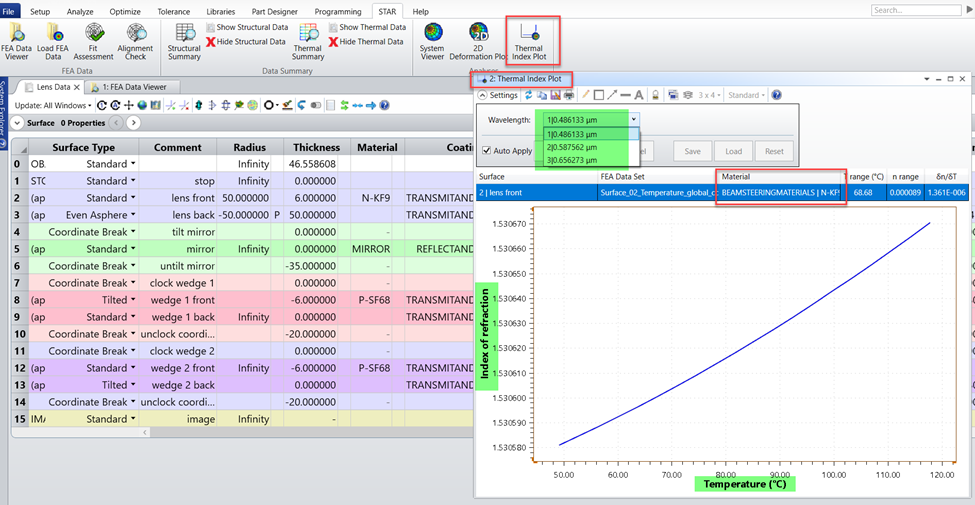In the recent OS22.1 release, STAR has implemented a new capability to handle multi-wavelength thermal gradient index calculation in a polychromatic system. Up until now, STAR only supports single-wavelength operation for monochromatic system. If your nominal system contains more than one wavelength, in previous releases, what happens is that after you load in the thermal FEA dataset, the thermal gradient index computed by STAR for the primary wavelength will overwrite the refractive index for all wavelengths in the lens volume and you will no longer see the dispersion effect for different wavelengths.
But now in OS22.1, with this new multi-wavelength capability, STAR can support multiple wavelengths in a polychromatic system and can properly compute the refractive index in the thermal gradient medium for all system wavelengths.
STAR has also implemented a new tool, Thermal Index plot. This is a feature many of our STAR users have expressed interests in. The Thermal Index Plot displays the refractive index vs temperature curve for different glass materials at different system wavelengths. This tool is very useful and can help user visualize the trend of the thermal index variation at different wavelengths.

If you are interested in using STAR to model thermal GRIN for a polychromatic system, I would recommend updating to OS22.1. Please give this feature a try and let us know what you think, and also feel free to reach out to support@zemax.com if you have any questions regarding this new feature!



